How to become a better cyclist: honest truths from an inside man

This year marks a decade since Kaspars Drikis, a commercial director from Riga, Latvia, first took up cycling.
From a complete newbie to participating in his 5th cycling training camp in Spain, he’s made it all the way to 2018 with plenty of international and local races in the pocket, rides nearly 14 hours on an average week and doesn’t intend to stop.
Kaspars’ story and advice will be the long-needed motivation to get yourself off the couch and on your bike, clean up the diet and perhaps even enter your first race.
So read on to find out some essential tips how to win those kilometers and become a better cyclist.
From being the “big guy” to the first race in flowery swimshorts
Kaspars was never a stranger to sports, playing soccer since middle school and futsal twice a week in his mid-twenties.
But even then - there was something amiss.
“To be honest, I considered myself pretty fit at the time. So at first, I couldn’t put my finger on why my teammates called me “the big guy”. Looking back at it now, I totally understand how that happened. Splurging on any food, any time of day… Well, there is no way I can blame slow metabolism,” Kaspars jokes.
“I took a hard look at myself and my lifestyle and realized - I needed to change my habits.”
That’s when Kaspars turned to cycling.

“My brother had this crazy idea - to enter SEB MTB Marathon, my first ever cycling race. It was a 40 km long distance, more than what I had ridden all year long. It seemed huge!
In my first race, I didn’t have contact pedals or cycling bib shorts - equipment essential to cycling. I was wearing my flower-print swimming shorts, sneakers and a yellow sweater. To be fair, I did have a helmet. Probably because it was obligatory for entering the race.”
Cycling proved a great way to be active and get fit, as opposed to running that Kaspars didn’t enjoy too much.
He was hooked.
“My main goal for taking up cycling was and still to this day is - my health and well-being,” Kaspars emphasizes.
Here are Kaspars’ 4 tricks to kindle interest in cycling (and any activity for that matter):
- Find your motivation. Is it to shed extra pounds? To be more athletic? To enter an Ironman race? Explore what suits you best and keep your goal in mind.
- Choose your activity. For Kaspars, cycling seemed an excellent way to get moving and proved so in the long term as well. There are various types of cycling - all you’ve got to do is pick yours.
- It’s not all about the result. Kaspars admits that what he enjoys most is the process of training and being active. It doesn’t have to be about winning the 1st place in every race - make the ride itself enjoyable.
- Listen to podcasts. Cycling is a solitary sport, so hearing the experience of other athletes will provide the necessary inspiration. Kaspars’ top 5 favorite podcasts include:
- VeloNews Podcast. A podcast that discusses the latest trends, news and controversies in the world of cycling.
- The Tim Ferriss Show. Tim Ferriss is a self-experimenter and bestselling author who deconstructs world-class performers, digging deep to find the tactics and tricks that listeners can use. Kaspars recommends the episode with Terry Crews as an especially inspiring one.
- The Forward Podcast with Lance Armstrong. The legendary Lance Armstrong gives a rare listen into conversations with interesting people he's met through the years.
- CyclingTips Podcast. An Australian-based podcast that seeks to share the beauty of cycling and to inspire cyclists of all levels.
- The Rich Roll Podcast. Vegan ultra-athlete Rich Roll discusses wellness among other things.

Preparation with “sguschonka” and why you should definitely enter your first race
Kaspars first started out in mountain biking. Along the way, though, he switched over to road cycling, mesmerized by the hundred-year-old traditions of the sport - the long-distance group rides and the casual cup of coffee during the ride, for example.
Up until now, Kaspars has participated in various international, as well as local races and rides such as Granfondo San Gottardo in Switzerland, Tartu Rattamaraton in Estonia, Filter ITT Cup and Unity Ride in Latvia and others. This summer he will take part in The Maurienne Trilogy - one of the hardest cyclosportives in France and among the most beautiful as well.

Even when cycling 8-14 hours on an average week, Kaspars prefers to call himself a lifestyle cyclist and emphasizes the importance of preparation before the race. Here’s Kaspars’ routine prior the event:
- Train up hard. Work on a big training volume up until the week of the race.
- Take it down a notch on the week of the competition. This is called tapering. You’ll want to reduce your workload, but not go too stale. When you rest, you’ll be able to feel the body getting stronger, your muscles working.
- Carbo-load the day before the race. It will improve your performance and boost endurance.
What’s always a part of Kaspars’ morning routine on the day of the race?
“Sguschonka,” he says, unblinking. “That’s sweetened and cooked condensed milk, rich in sugar, and I add some rice to it. It’s a tradition of mine, brings back memories of racing, as well as my childhood.”

If you’re still contemplating whether to enter your first race, Kaspars encourages - there is no such a thing as perfect timing. Most likely - you’ll never be ready enough.
“When you’ve become a bit bored with just cycling along the streets and you feel “an urge from within”, that’s probably a good place to start.”
Kaspars gives 4 reasons you should enter a cycling race - at least once:
- You’ll understand whether you’re up for it. Cycling in large groups of people and crowded spaces is very different than riding solo. After doing a race or two, you’ll realize if this is something for you.
- Do it for the reality check. People tend to overestimate or underestimate their abilities and skills, so entering a race will be an eye-opener on how good a cyclist you are. It will help you realize how far you’ve come and where you need to invest - whether it is your technique, endurance, equipment, etc.
- Socializing. There is no better place to meet like-minded individuals that are as crazy about cycling as you are than at a race.
- There’s always a way out. If you come to realize that cycling races are not really for you, no bother. You can continue riding on the road alone, nobody will judge.
Cyclist’s yearly routine and getting the best out of your training
What most people don’t realize is that when you’re serious about cycling, it’s not just getting ready for your race a couple of weeks before. It’s a year-long commitment and adjusting your plans accordingly.
Here’s what the average year for Kaspars looks like:
- NOVEMBER. Training for the new cycling season starts. Training includes low-intensity workouts in the gym, on the stairs, core workouts, as well as an indoor trainer.
- DECEMBER UNTIL FEBRUARY. Similar to November, but adding more of indoor trainer workouts. Track cycling in Panevėžys, Lithuania. Upping the intensity of gym workouts.
- MARCH. Cycling training begins. For Kaspars, it includes going to Spain for his training camp where he covers 1600-2000 km in 3 weeks. This year, it will be his 5th camp so far.
- APRIL UNTIL SEPTEMBER / OCTOBER. Enter summer regime. Races interchange with cycling training 4-6 times a week.
- SEPTEMBER / OCTOBER. End of the cycling season.
- OCTOBER. Time to rest and take a break from your bike both physically and mentally.

The #1 mistake that people make, in Kaspars’ opinion, is: delaying training until it is too late.
“You sit around all winter long, munching on chips. Then comes April, you train for perhaps two weeks and enter your first race. That’s no way to go,” says Kaspars.
So here are 6 things you need to pay attention to in order to get more out of your training:
- Set a training plan. Consult a professional cycling coach to prepare a training strategy for you. Kaspars also uses Training Peaks - a platform designed for athletes who want to get expert guidance, structure their training and track progress.
- Do your research. Knowing the basics of cycling training methodology and anatomy will help you understand your body, as well as achieve better results.
- Include base-training. It’s fundamental to any training plan. A foundation of steady miles is essential to prepare your body for your cycling year, improving on endurance. Not every practice has to be about bringing your heart rate to a peak - that way you’ll sooner exhaust yourself.
- Don’t underestimate rest and recovery. Everybody needs their rest, especially if you’re training harder than usual or are just starting out. Bear in mind that there’s no such a thing as overtraining - there’s only under-recovery.
- Don’t be afraid to use supplements. Isotonic drinks, gels and other kinds of performance boosters are handy even when your diet seems well-balanced. Kaspars suggests using them in your training as well - this will replenish your strengths better than drinking plain water.
- Be ready for sacrifices. This means - skipping the occasional chill afternoon with your friends and going for a cycling practice instead of kicking back with a beer or two. Even on business trips, Kaspars tries to find a gym for his workouts or a staircase to do sprints. Be consistent and don’t skip practice.

Invest in your bike to prolong its lifespan
When you’re cycling on a daily basis, your bicycle requires regular technical care. Cleaning, taking care of the drivetrain, maintaining it in proper condition... This means - investment.
“There are months when I don’t spend anything at all on my bike and times when it’s possible to spend hundreds. It all depends on the time of year really. The great thing is - road bicycles require much less investment than an MTB bike.”

Even then, you have to be ready for some expenses. Kaspars admits he is not the guy who would spend tens of thousands on a bicycle and the newest technical upgrades. “Even spending two grand on my first professional bike was a psychological challenge,” he says. Still, the yearly expenses come to be more than €300 for a road bicycle.
Here’s how to keep your bike “fit” and around for a longer time:
- Invest in quality bicycle parts and hardware. After choosing the frame, the groupset is the second important thing that you should look at. A groupset is the collection of components that make you stop and go (the drivetrain, shifters, and brakes). The “big three” groupset brands to choose among for road bicycles are Shimano, SRAM, and Campagnolo.
- Invest in components that connect the bicycle to the body. Proper seating, shoes, padded shorts are important. Good cycling tights save a lot of sore backsides.
- Invest in storing your bicycle properly. Kaspars admits that storing and transporting your bicycle can be quite tricky - especially if it is a road bicycle, more prone to dents and more delicate overall. So invest in a good bike cover. Use a roof rack for sturdier bicycles (like MTB bikes) only, transporting your road bicycle in the salon of your vehicle and storing it indoors.
Eating correctly to achieve better results
When training for endurance sports such as cycling, maintaining a balanced diet is especially important.
“Your weight directly affects your results - whether you’re cycling just for fun or entering a race,” explains Kaspars.
“There is NO such a thing as a ready-made plan that will fit everybody. Like eating boiled eggs and chicken fillet and believing that everything will be a-okay. You’ll have to figure out what works for you, and this requires building your knowledge base.”

Here are 4 useful tips how to improve your diet:
- Learn the role of carbohydrates, proteins, and fats. What supplies more energy? What builds muscle tissue and improves growth? Know your nutrients and when to fill up on which.
- Adjust your eating to your schedule. For example, fill up on carbohydrates when you’re exercising more or consume them less when you don’t have any workouts planned. Eat a healthy snack like an energy bar when you’re training to avoid carbohydrate deficit.
- Learn your body type. Knowing which of the three basic body types - ectomorph, mesomorph or endomorph - you're closest to will help you better tailor your diet to meet your needs.
- Count your calories. Do you know how many calories there are in an average apple? Or that oh-so-tempting Snickers bar? Weighing the food and noting everything down will help you get a good idea of how many calories you put into your body. Get a food scale, a notebook or better yet - use an online app such as My Fitness Pal which is also useful for finding new recipes.

To sum up: take your time and remember your commitment
We live in an era where “the quicker, the better” is a mantra used by influencers in nearly every aspect of our lives. Fitness coaches promise quick results with their newest HIIT program. Food companies promote 1-minute meals because who in the world has time to wait longer?
In truth, training for a sport and embracing a healthy lifestyle is a long-term investment that requires years of hard work and self-discipline.

“Be ready that there will be days when you don’t feel like doing anything and skipping your workout. Times like these take a look back at how far you’ve come and push through. You’ll be surprised when those workouts prove worthy of every sweaty minute.”
Know your goal and keep in mind why you committed to it.
We wish you luck and patience - whether you’re cycling just for the fun of it, entering your first race or competing in your 10th. May the endurance be with you.
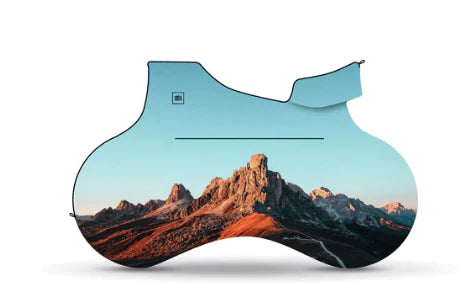


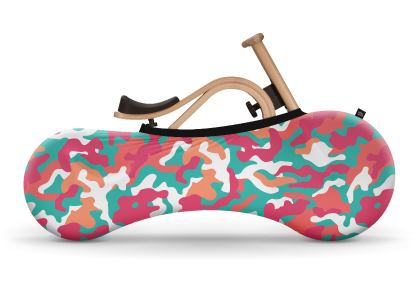
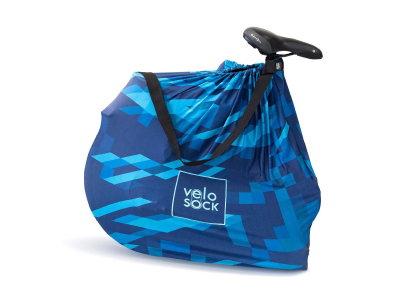


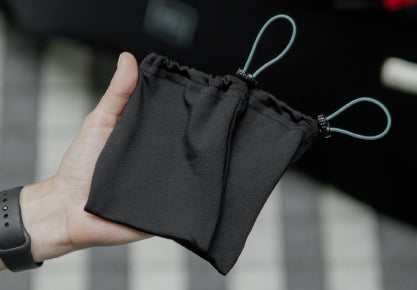
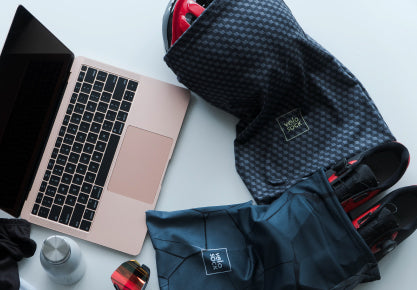






Leave a comment